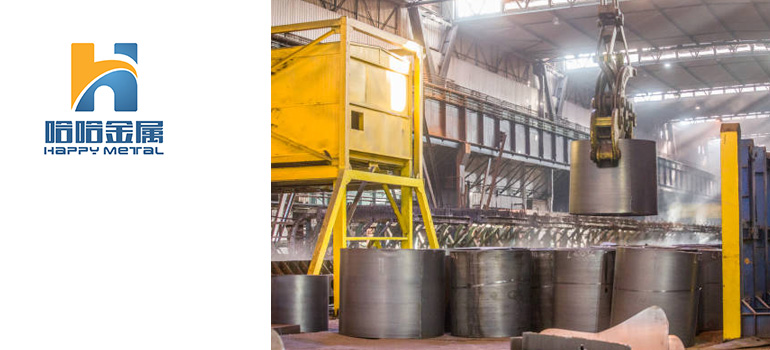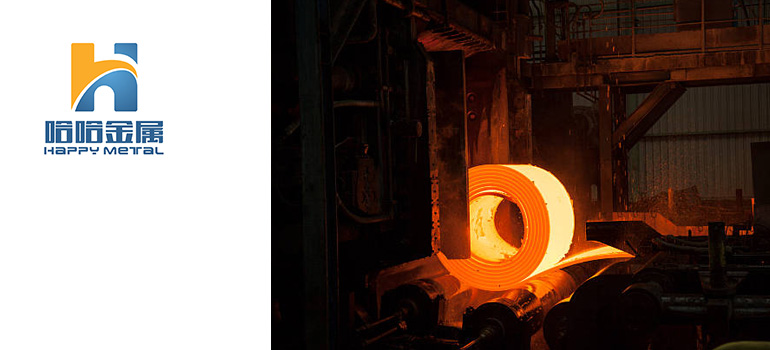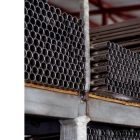Summary:
What Are the Grades of Hot Rolled Steel?
What is Hot Rolled Steel?
What Are the Most Common Hot Rolled Steel Grades?
What Is The Hot Rolled Steel Used For?
What is Hot Rolled Steel?

Hot rolled steel is a unique type of steel distinguished by its production process. This process involves heating steel to a temperature typically above 1700 degrees Fahrenheit, which is well beyond the steel’s recrystallization temperature. Rolling the steel at these high temperatures allows it to be shaped and formed with relative ease, resulting in a versatile product that is not confined to specific dimensions, unlike its cold-rolled counterpart.
The Science Behind Hot Roll Steel
Consider this – steel, when heated beyond its recrystallization temperature, undergoes a remarkable transformation. It softens, becoming malleable enough to be manipulated into a wide array of shapes and sizes. This intriguing state transition is triggered when the steel’s temperature rises above the recrystallization point. But what does that mean?
In essence, the recrystallization temperature is the threshold at which the steel’s crystalline lattice structure can revert to its original state. This lattice structure becomes distorted when the steel undergoes the process of cold rolling. Once the temperature is cranked up past the recrystallization point, the distorted structure can correct itself, returning to its pristine, undistorted state. This transformation endows hot roll steel with its unique mechanical properties and versatility.
The Process of Making Hot Rolled Steel
The manufacturing journey of hot rolled steel begins with a large piece of metal, known as a billet. This billet is heated to a high temperature until it becomes pliable. Once the steel reaches the desired temperature, it is then pressed or rolled under immense pressure until it has achieved the desired thickness and shape.
This process is achieved through a series of rolling operations using a machine known as a rolling mill. The heated steel is passed through two rolls that squeeze the steel into the desired thickness. The gap between the rolls is adjusted depending on the thickness that the finished product is supposed to have.
Once the steel has been rolled into the desired shape and size, it is left to cool. During cooling, the steel naturally contracts and slightly hardens, making it more robust and durable.
The Appearance of Hot Rolled Steel
After the cooling process, hot roll steel takes on a characteristic bluish-grey finish and a slightly rough texture. This rustic appearance is a byproduct of the hot rolling process and is often cherished for its industrial aesthetic.
The surface of hot roll steel is also slightly rounded due to the rolling process. While this finish may not be as smooth or polished as cold rolled steel, it is typically not an issue as hot rolled steel is often utilized in applications where the aesthetic appeal of the finished product is not the primary concern.
Despite its rough exterior, hot rolled steel is an incredibly versatile and useful material. Its unique creation process allows it to be shaped into a wide variety of forms, making it an invaluable material across numerous industries.
What Are the Most Common Hot Rolled Steel Grades?
Take a walk in the realm of hot rolled steel, and you’ll be greeted with a plethora of grades. Each one has its own unique blend of chemical compositions and mechanical properties, offering a different set of benefits. Let’s meet some of the most common players in the field.
A36 Hot Rolled Steel
Say hello to A36 hot rolled steel. Its popularity is hard to miss. This grade boasts superior strength and formability, making it a versatile player in a wide variety of applications. A mixture of elements like carbon, manganese, copper, silicon, and sulfur all contribute to its versatility.
But what makes A36 stand out? Firstly, its yield strength is around 36,000 pounds per square inch (PSI), which makes it an ideal choice for load-bearing structures like bridges and buildings. Its unique chemistry also allows for easy welding and bolting, earning it a prime spot in construction and architectural projects. It’s the go-to grade for general structural purposes and even finds use in the fabrication of machinery parts and frames.
A1011 Hot Rolled Steel
A1011 hot rolled steel grade is another popular choice, particularly for its enhanced formability and surface finish compared to other grades. It contains elements such as carbon, manganese, phosphorus, sulfur, and silicon. This combination gives A1011 a unique edge in applications requiring a smooth surface and intricate forms.
A standout feature of A1011 is its ductility. It has the ability to bend into various shapes without breaking, making it a VIP in the production of automobile parts, furniture, and appliances. Add to that its enhanced surface finish, which allows it to be painted or coated effectively, and you’ve got a grade that offers both aesthetic and functional benefits to the end product.
A1018 Hot Rolled Steel
A1018 is a low-carbon hot rolled steel that is suitable for the most demanding applications. What sets A1018 apart is its high strength, excellent ductility, and good weldability, which makes it an ideal choice for projects requiring robust and flexible steel.
Despite its low carbon content, A1018 retains superior strength, making it an ideal choice for parts like automotive components, buildings, and even railroad tracks. Its ductility and malleability mean it can be formed into complex shapes without cracking, making it a versatile option for a variety of industries.
A569/A1011 Hot Rolled Steel
A569/A1011 is a low carbon hot rolled steel grade known for its surface smoothness and excellent formability. It’s this combination of properties that make it a popular choice for parts requiring bending, welding, or riveting.
It’s commonly used in the manufacturing of furniture, appliances, and other objects that require a degree of precision in their construction. With its ease of formability, it can be manipulated into various shapes and sizes, meeting the diverse requirements of different manufacturing projects.
What Is The Hot Rolled Steel Used For?
Hot rolled steel, owing to its strength, workability, and cost-effectiveness, finds use in a plethora of applications across a variety of industries.
Hot Rolled Steel in Construction
In the construction industry, hot roll steel is the preferred material for structural components. Its high strength and versatility make it ideal for creating components like I-beams and railroad tracks. Moreover, its ability to withstand high stress and weight makes it an excellent choice for constructing high-rise buildings and bridges.
Hot Rolled Steel in the Automotive Industry
Automobile manufacturers heavily rely on hot rolled steel for parts that require bending or shaping, such as car chassis and frames. The formability of hot roll steel grades like A1011 make them ideal for creating complex shapes without compromising the material’s strength or integrity.
Hot Rolled Steel in Manufacturing
The manufacturing industry utilizes hot rolled steel in a myriad of ways. It is used in the production of appliances, furniture, and pipe and tubing. It’s strong, it’s durable, but most importantly, it’s adaptable. Need it in a particular shape? No problem. A specific size? You’ve got it. This sheer versatility, coupled with its robust nature, makes it a go-to choice for a wide variety of manufacturing applications.
The Promising Future of Hot Rolled Steel
Hot rolled steel isn’t just a material. It’s a key player in a plethora of applications, a silent contributor to our day-to-day lives. Be it construction, automotive, or manufacturing, this type of steel quietly pulls its weight, offering a solution that is not just durable, but also cost-effective.
But the story of hot rolled steel doesn’t end here. As we look to the future, the horizon is bright. Technological advancements march on, and with each stride forward, the potential applications and varieties of hot rolled steel evolve. It’s an ever-changing landscape, a thrilling journey of innovation, making hot rolled steel an incredibly exciting material to keep an eye on.




